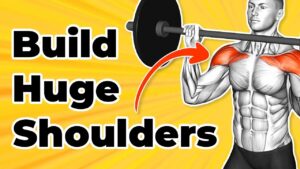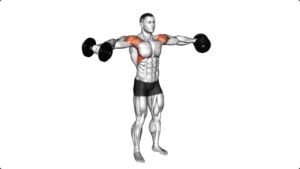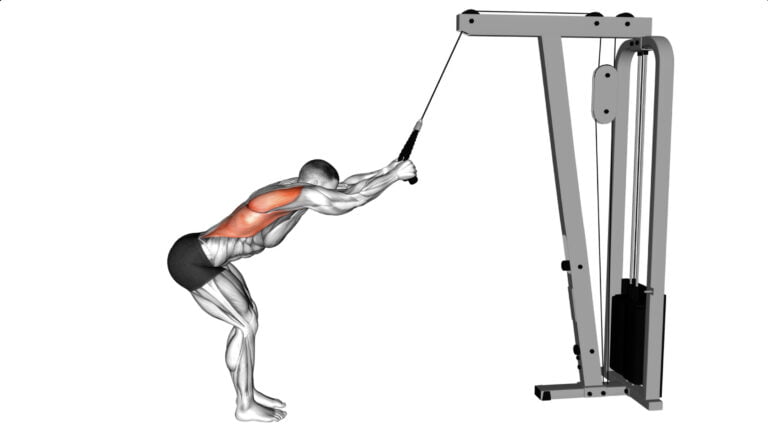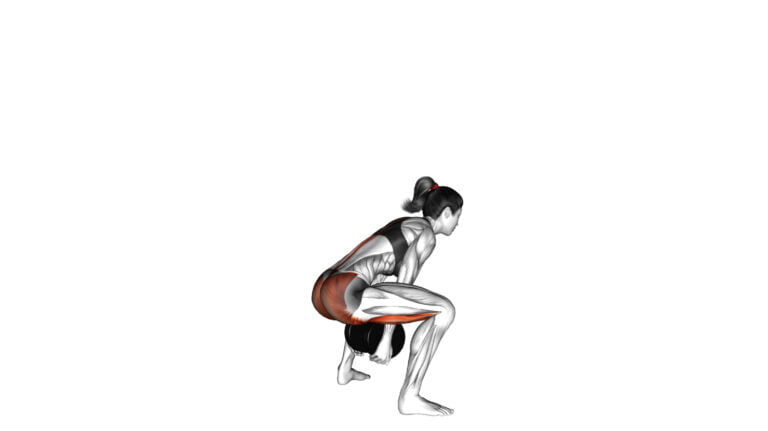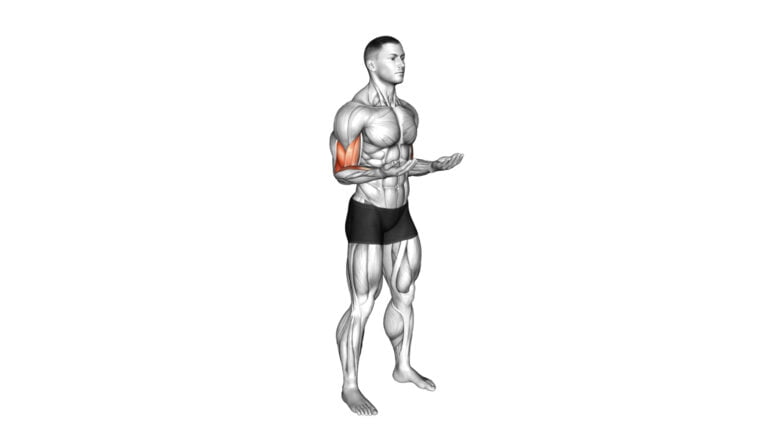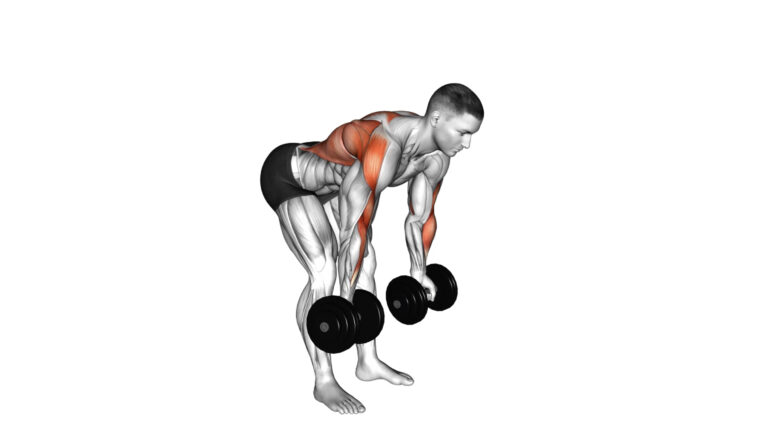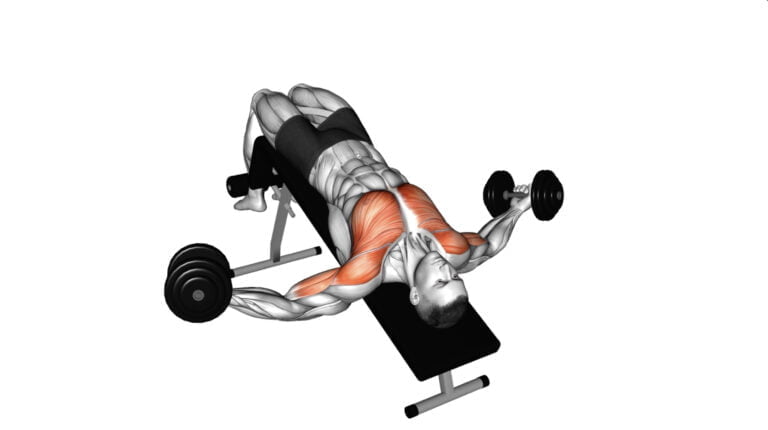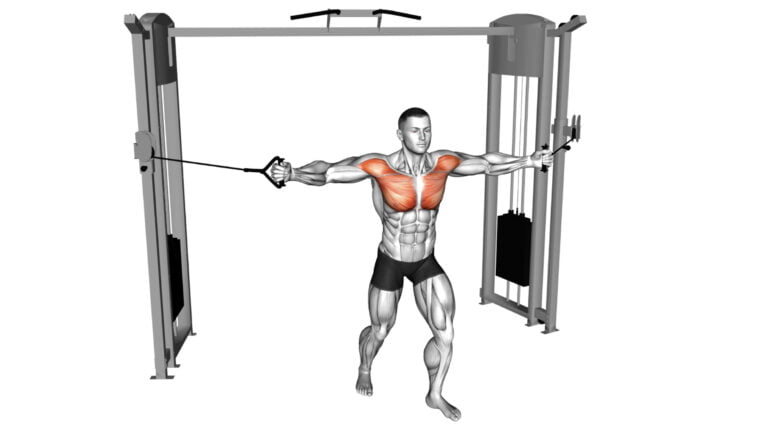10 Effective Cable Exercises For Rear Delts
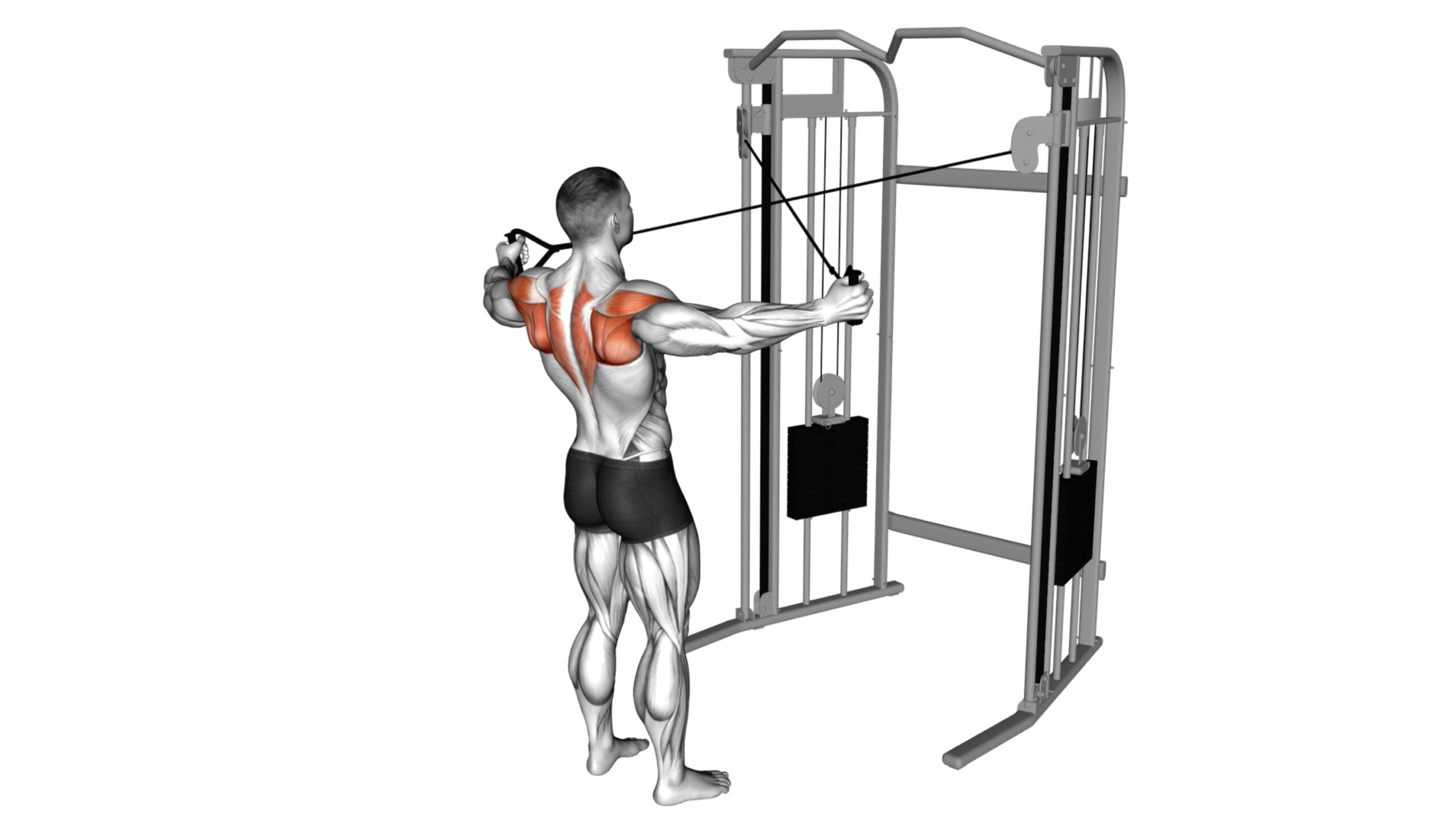
Building strong rear delts is essential for a well-rounded upper body and overall shoulder health. Many people underestimate the importance of targeting these muscles, which can lead to imbalances and potential injuries. As a certified personal trainer with years of experience in strength training, I’ve seen the transformative impact that focused rear delt exercises can have on my clients’ posture, stability, and strength.
In this article, we’ll dive into 10 effective cable exercises for rear delts that you can incorporate into your workout routine. Whether you’re new to cable training or looking to switch up your current routine, these exercises will help you build strong and defined rear delts while improving overall shoulder function.

Did you know that incorporating cable exercises for rear delts can improve not only your physical appearance but also enhance your shoulder stability and reduce the risk of injury? So let’s get started on achieving those sculpted rear delts!
Key Takeaways
- Cable exercises like the Reverse Fly and Face Pull target rear deltoids, crucial for balanced shoulder strength.
- Choosing the correct weight and maintaining proper form are vital for avoiding injury and effectively working the rear delts.
- Incorporating a variety of cable movements ensures comprehensive development of rear delt muscles, improving posture and upper body aesthetics.
- Engaging in 3-4 sets with 8-12 reps per exercise is recommended to stimulate muscle growth in the rear delts while ensuring overall shoulder health.
- Consistent training using these cable exercises can lead to significant improvements in shoulder stability, function, and appearance.
Briefly explain the importance of targeting rear delts for balanced upper body strength
Strong rear delts play a crucial role in achieving a balanced upper body. They support your shoulder health and ensure stability, which is key for both day-to-day movements and rigorous exercises.
Without proper attention to these muscles at the back of your shoulders, you risk creating muscle imbalances that can lead to injury or poor posture.
By focusing on the rear deltoids through specific cable exercises, individuals see improvements in their overall physique symmetry. This targeted approach not only enhances appearance but also contributes to enhanced shoulder functionality.
Engaging these often-neglected muscles ensures a well-rounded strength that supports a variety of physical activities and protects against potential strains or sprains.
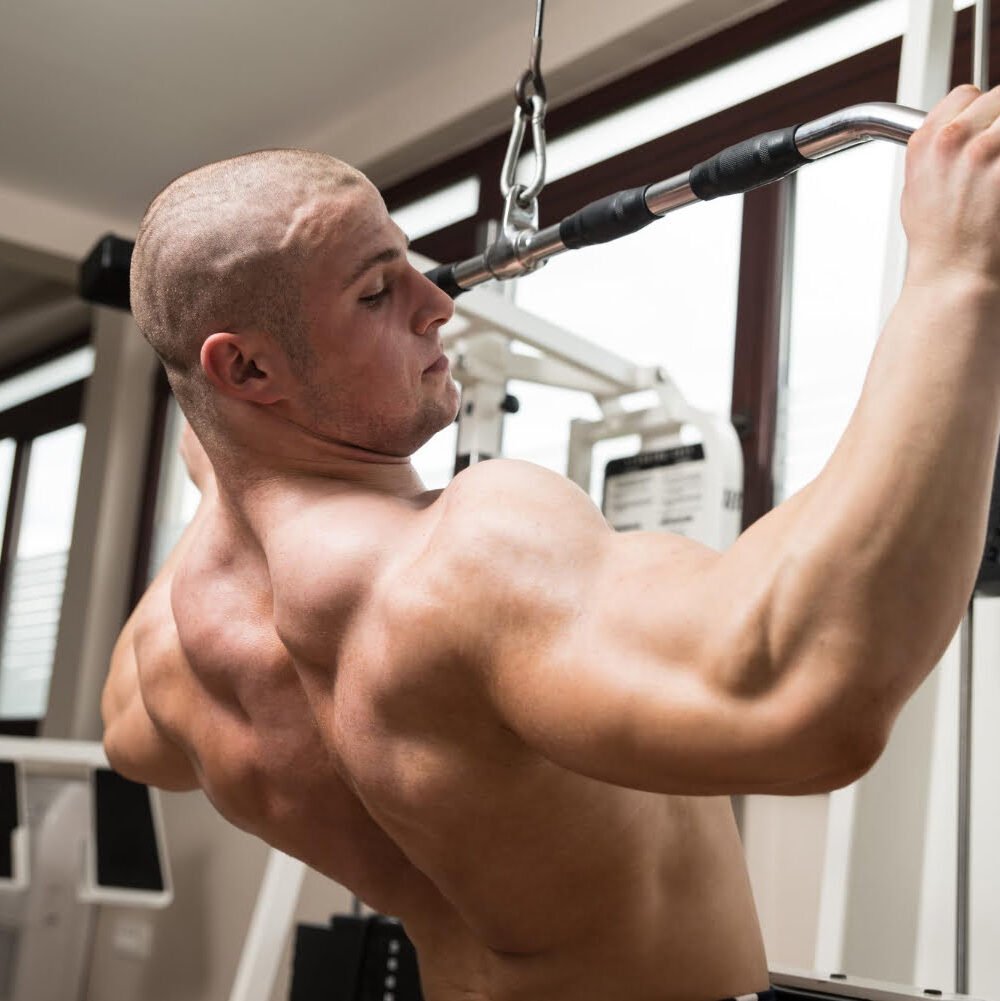
Benefits of Cable Exercises for Rear Delts
Performing cable exercises for rear delts offers several benefits, including improved posture, increased shoulder stability, and enhanced upper body strength and aesthetics. These exercises target the often neglected rear deltoid muscles to ensure balanced upper body strength and function.
Improved posture
Engaging in cable exercises for your rear delts has a huge payoff when it comes to standing tall and proud. Stronger rear deltoids will help balance out the shoulder muscles, pulling your shoulders back into their natural alignment.
This change can transform slouching habits into confident, healthy posture without you even realizing it’s happening.
Creating an exercise routine focusing on these key muscles does more than just improve how you look; it provides essential support to your upper back and shoulders. Working on those posterior deltoids is crucial to counteracting hours spent hunched over computers or smartphones.
Embrace these workouts not only as steps toward muscle growth but also as investments in a pain-free neck and shoulders, giving you one less thing to worry about in your busy life.
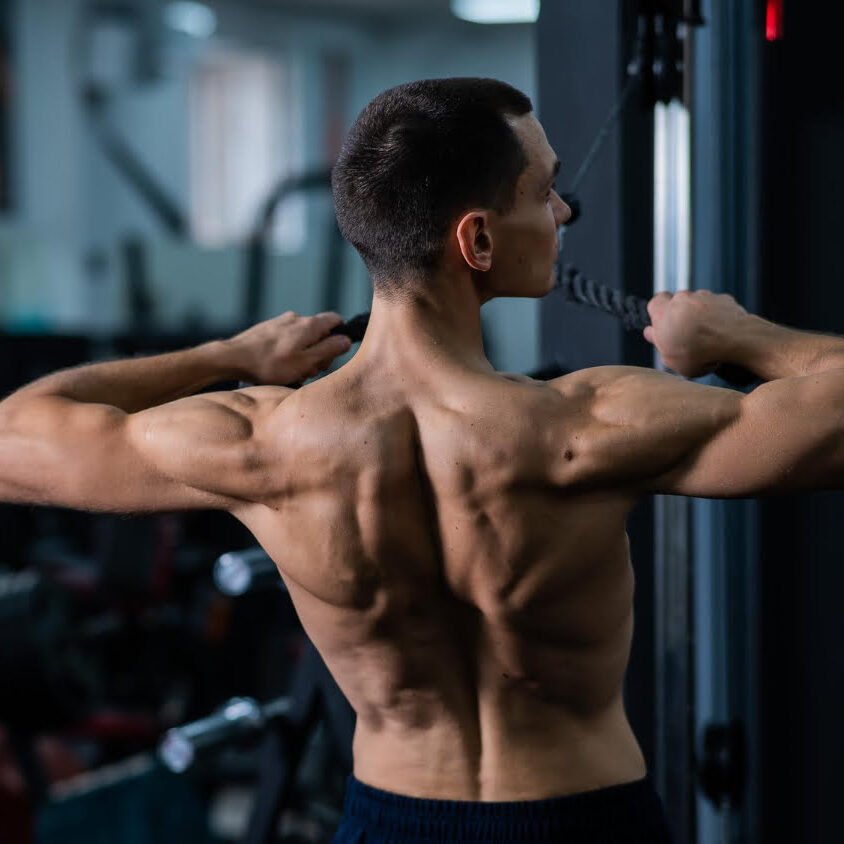
Increased shoulder stability
Building on the foundation of improved posture, targeting your rear delts with cable exercises also contributes to increased shoulder stability. This is crucial for daily activities and advanced training routines alike.
Stronger shoulders can handle more stress from lifting heavy objects or performing complex movements without risking injury.
Focusing on these muscles enhances the support around your shoulder joint, ensuring that every lift, push, and pull is smoother and more controlled. Cable workouts provide constant tension throughout the exercise’s range of motion, leading to better muscle engagement and ultimately a more stable shoulder girdle.
With regular training, you’ll notice an improvement not only in how your shoulders feel but also in their ability to move weight effectively during bench press sessions or while nailing an upright row.
Enhanced upper body strength and aesthetics
Cable exercises targeting your rear delts are not just about injury prevention or shoulder stability; they’re key in developing a powerful and visually striking upper body. Consistent training can result in defined shoulders that complement the rest of your physique, helping to create that sought-after V-shape.
The tension cables provide ensures your muscles work hard throughout each movement, promoting muscle growth and enhancing the aesthetics of your upper arms, shoulders, and back.
Incorporating these exercises into a routine does wonders for both strength gains and sculpting those important posterior deltoids for an impressive silhouette. As you invest time into working those rear delts with cable machines, envision the robust frame you’re building—each pull bringing you closer to balanced musculature and symmetry across your upper half.
Now let’s jump into discussing some specific cable movements that will help achieve these results.
10 Effective Cable Exercises for Rear Delts
1. Cable Cross-over Revers Fly, Cable Bent Over One Arm Lateral Raise, Cable Lying Face Pull, and more are all great options for targeting those rear delts and achieving a well-rounded upper body strength.
Learn the proper form and technique to get the most out of these cable exercises for rear delts. Read on to discover how you can effectively train your rear delts with cable exercises.
1. Cable Cross-over Revers Fly
The Cable Cross-over Reverse Fly is an effective exercise that specifically targets the rear deltoid muscles, contributing to improved shoulder strength and stability. This exercise involves pulling the cables from a low position across the body, engaging the rear deltoids effectively.
Proper form is crucial for this exercise to prevent injury and maximize engagement of the targeted muscles. Additionally, incorporating variations and different grips can facilitate targeting the rear delts from diverse angles, leading to well-developed rear deltoid muscles for overall balanced upper body strength.
2. Cable Bent Over One Arm Lateral Raise
Performing Cable Bent Over One Arm Lateral Raise effectively targets the rear deltoids, promoting muscle growth and strength. By bending over at the waist and raising one arm to the side with a cable machine, you can isolate and engage the rear deltoid muscles.
Focus on controlled movements and contract your rear delts for optimal results. Consistency in proper form is essential to see significant improvements from this exercise, making it an ideal addition to your routine for building strong rear delts.
3. Cable Lying Face Pull
The Cable Lying Face Pull is an effective exercise to specifically target the rear deltoids and upper back muscles. To perform this exercise, start by lying face-up on a bench with your head close to the cable machine.
Grab the rope attachment with both hands, palms facing inward, and pull it towards your forehead while retracting your shoulder blades. Focus on squeezing your rear delts at the end of the movement before returning to the starting position.
Engage in proper form and control throughout each repetition to effectively isolate and strengthen the rear deltoids. When performed correctly, this exercise not only enhances shoulder stability but also contributes to improved posture and overall upper body strength.
4. Cable Rear Delt Row
After mastering the Cable Lying Face Pull, transition into the Cable Rear Delt Row to continue targeting and strengthening your rear deltoid muscles. This exercise hones in on shoulder stability for comprehensive upper body strength.
Start by standing facing the cable machine with the pulley set at the lowest position. Grab the handle with one hand and pull it towards your shoulder, focusing on squeezing your rear delts.
Ensure proper form and control throughout to effectively work this muscle group.
5. Cable Seated Rear Lateral Raise
Sit on a bench with your back straight and hold the cable handles with your arms at your sides. Raise your arms out to the sides until they are at shoulder height, then slowly lower them back down.
This exercise effectively targets the rear deltoid muscles and can be performed with various variations, such as using different handles or adjusting the cable machine’s height.
By performing Cable Seated Rear Lateral Raise regularly, you can strengthen and develop your rear delts, leading to improved shoulder stability and better overall upper body strength.
6. Cable Standing Cross over High Reverse Fly
The cable standing cross over high reverse fly is a dynamic exercise that effectively targets the rear deltoid muscles, crucial for overall shoulder strength and stability. This exercise involves a unique standing position with crossover motion, providing a distinct angle to specifically engage the rear delts.
Utilizing a cable machine ensures constant tension on the muscles throughout the movement, promoting effective engagement and growth. It is essential to prioritize proper form and controlled movements when performing this exercise to prevent injury and achieve optimal results.
By incorporating the cable standing cross over high reverse fly into a comprehensive shoulder workout routine, individuals can enhance their rear delt muscles, ultimately improving shoulder function and aesthetics.
7. Cable Standing Single Delt Row
Transitioning from the Cable Standing Cross over High Reverse Fly, the Cable Standing Single Delt Row is another effective exercise for strengthening your rear deltoids. In this exercise, you’ll use a cable machine and a single-handle attachment to perform rowing motions while standing.
To perform the Cable Standing Single Delt Row, start by attaching the handle to a low setting on the cable machine. Stand with your side facing the machine and grab the handle with one hand.
Pull the handle toward your body in a rowing motion, keeping your elbow close to your torso and squeezing your shoulder blades together at the end of each movement. This exercise effectively targets and strengthens your rear deltoid muscles while also engaging other upper body muscles for stability.
8. Cable Seated Face Pull (with rope)
The cable seated face pull with rope effectively targets the rear delts, upper back, and traps. By using a rope attachment, you can achieve a greater range of motion and better contraction of the rear delts, leading to improved shoulder stability and strength.
Remember to maintain proper form and control by focusing on squeezing the shoulder blades together at the peak of the contraction. The seated position isolates the rear delts, preventing cheating or using momentum while allowing you to build strong and well-defined rear delts as part of your routine.
Including this exercise in your workout regimen offers practical benefits such as enhanced shoulder stability and aesthetics due to strengthened rear deltoids. This exercise provides an effective means of targeting specific muscle groups for individuals seeking balanced upper body strength.
9. Cable One Arm Reverse Fly
The Cable One Arm Reverse Fly is a targeted exercise for building strong rear delts. It involves standing and pulling the cable out to the side with one arm, effectively engaging the muscles in the shoulder region.
Maintaining proper form and control throughout the movement is crucial for maximizing the benefits of this exercise. When incorporated into a comprehensive shoulder workout routine, this exercise provides a unique and effective way to strengthen and develop the rear deltoids.
By adding the Cable One Arm Reverse Fly along with other effective cable exercises for rear delts, individuals can achieve well-rounded shoulder development. This particular exercise contributes to enhancing overall upper body strength, especially in addressing muscular imbalances commonly found in shoulder development routines.
10. Cable Standing Face Pull
Engage the rear delts effectively with the Cable Standing Face Pull. Employ a cable machine and rope attachment, maintaining high and wide elbow positioning as you pull the weight towards your face.
Focus on precise form and controlled movement to prevent injury and optimize results.
Incorporating the Cable Standing Face Pull into your workout regimen contributes to cultivating well-rounded shoulder muscles when combined with other effective cable exercises for rear delts.

Tips for Proper Training and Form
To ensure proper training and form when performing cable exercises for rear delts, it’s important to avoid common mistakes such as using too much weight or improper positioning. Focus on maintaining good posture, engaging the rear delt muscles, and choosing a weight that allows you to perform the exercise with controlled movements.
Proper sets and reps will depend on your individual fitness level and goals, so it’s essential to listen to your body and adjust accordingly.
Common Mistakes
Using too much weight during cable exercises for rear delts can lead to recruitment of other muscles, resulting in ineffective targeting of the rear delts. Rushing through movements with momentum instead of controlled motions can hinder the effectiveness of the exercises, leading to potential injury and diminished results.
Failing to properly adjust the cable machine’s height and resistance may impact workout efficiency, as it could alter the targeted muscle engagement. Neglecting a thorough warm-up and stretching routine prior to performing cable exercises for rear delts increases the risk of injury, emphasizing the importance of preparing muscles adequately before engaging in these workouts.

Choosing the right weight
After addressing common mistakes, the next crucial step is choosing the right weight for your cable exercises. Starting with a lighter weight and gradually increasing as strength improves is essential to avoid strain or injury.
Consulting with a fitness professional can help determine the appropriate weight based on your current fitness level and goals. It’s important to find a balance where the weight challenges your muscles without compromising proper form.
Remember that finding the right weight may involve some trial and error, but prioritizing safety and gradual progression is key.
Recommended Sets And Reps
After choosing the right weight for your cable exercises, it’s essential to focus on the recommended sets and reps to maximize the effectiveness of your rear delt workout. Aim for 3-4 sets of each exercise, with a rep range of 8-12.
This approach allows for sufficient muscle stimulation while also promoting hypertrophy and strength development in the rear delts. By following these recommended sets and reps, you can gradually increase the challenge as you progress in your training, ultimately leading to well-developed and balanced deltoid muscles.
Incorporating these specific set and repetition ranges into your routine will help ensure that you are effectively targeting and stimulating your rear deltoids. Consistent adherence to these guidelines can lead to noticeable improvements in shoulder stability, posture, and overall upper body strength over time.
Conclusion

Incorporate these 10 effective cable exercises for building strong rear delts into your workout routine. Maximize your shoulder strength and stability with practical and efficient strategies.
How can you apply these exercises to achieve balanced upper body strength? Elevate your fitness journey by implementing these impactful training methods. Explore further resources to enhance your knowledge and mastery of cable exercises for rear delts.
FAQs
1. What are rear delts and why should I strengthen them?
Rear delts, or posterior deltoids, are the muscles at the back of your shoulder that help with shoulder extension and play a crucial role in achieving well-balanced shoulders, preventing injury, and improving posture.
2. Can cable exercises target my rear delts effectively?
Absolutely! Cable exercises like rear delt flys and face pulls specifically engage your rear deltoid muscles along with synergists like the infraspinatus for comprehensive strength conditioning.
3. Is it possible to isolate my rear delts during a workout?
Yes, isolation exercises focusing on external rotation and abduction movements can hone in on your rear deltoids without involving major muscle groups such as lats or triceps.
4. How can I avoid common mistakes when working out my rear delts?
Keep proper form top of mind by ensuring you don’t let your elbows drop or compensate with other muscles; this helps direct the tension to your rear delts during each repetition.
5. Are there compound exercises that also work the rear delts?
Indeed! Compound movements involving pulling actions—like lat-pulldowns or upright rows—can activate many muscles including those in your upper back like lateral deltoids alongside front and side delts for overall shoulder development.
6. How often should I perform these cable exercises for optimal results?
Incorporate these targeted movements into your routine 2-3 times weekly as part of a balanced strength training program to progressively enhance power in your medial rotators and achieve defined muscularity around your clavicle region.

Author
Years ago, the spark of my life’s passion ignited in my mind the moment I stepped into the local gym for the first time. The inaugural bead of perspiration, the initial endeavor, the very first surge of endorphins, and a sense of pride that washed over me post-workout marked the beginning of my deep-seated interest in strength sports, fitness, and sports nutrition. This very curiosity blossomed rapidly into a profound fascination, propelling me to earn a Master’s degree in Physical Education from the Academy of Physical Education in Krakow, followed by a Sports Manager diploma from the Jagiellonian University. My journey of growth led me to gain more specialized qualifications, such as being a certified personal trainer with a focus on sports dietetics, a lifeguard, and an instructor for wellness and corrective gymnastics. Theoretical knowledge paired seamlessly with practical experience, reinforcing my belief that the transformation of individuals under my guidance was also a reflection of my personal growth. This belief holds true even today. Each day, I strive to push the boundaries and explore new realms. These realms gently elevate me to greater heights. The unique combination of passion for my field and the continuous quest for growth fuels my drive to break new ground.






